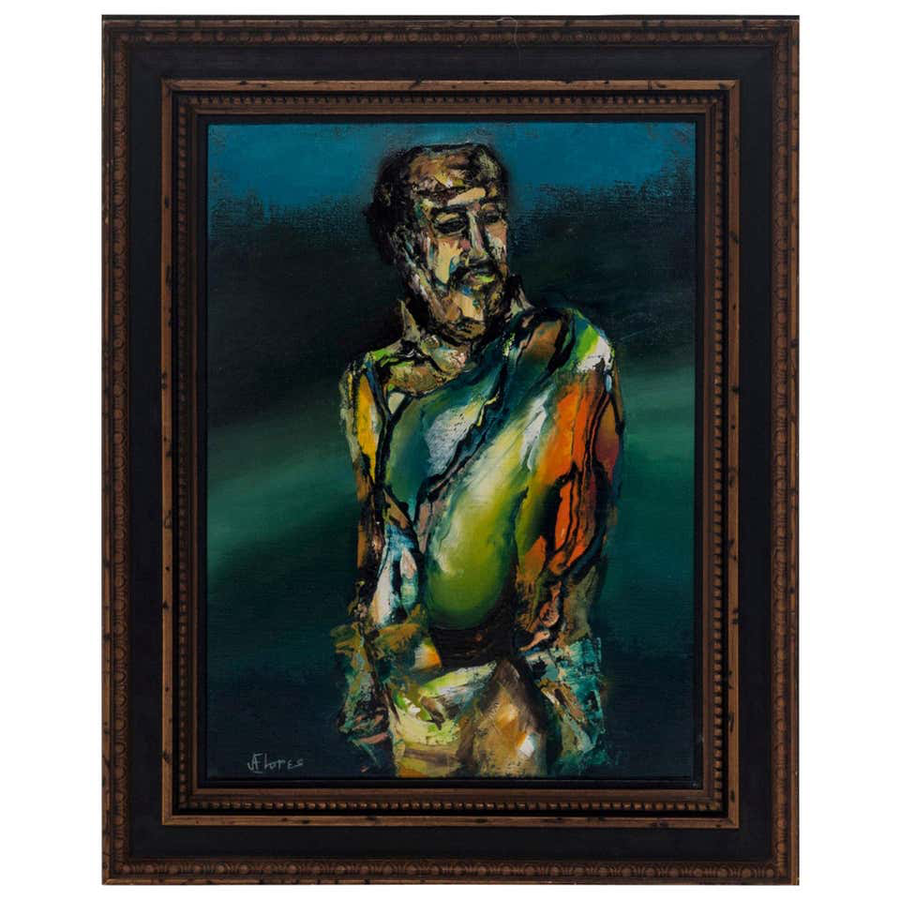Why Figurative Oil Painting Remains a Timeless Selection for Artists
Why Figurative Oil Painting Remains a Timeless Selection for Artists
Blog Article
The Duty of Emotion and Expression in Figurative Oil Paint: A Comprehensive Analysis of Subject Issue and Structure
The interplay of feeling and expression in figurative oil painting serves as a crucial lens via which one can analyze the intricate relationship in between subject matter and composition. Artists harness numerous strategies, from color option to brushstroke characteristics, to grow psychological vibration within their works.
Recognizing Emotion in Art
Emotion in art works as a powerful channel for expression, enabling artists to convey complicated feelings via their work. In metaphorical oil paint, this emotional depth is typically represented through the depiction of the human number, catching the nuances of human experience. The selection of subject issue, color palette, and brushwork all add to the emotional vibration of an item.
Artists regularly bring into play individual experiences, social problems, or global motifs to stimulate feelings in the customer. A portrait may reflect susceptability, while a vibrant number in motion can signify freedom or turmoil. These psychological threads connect the viewer to the artwork, promoting a discussion that transcends the aesthetic medium.
In addition, the interplay in between light and darkness can magnify psychological intensity, directing the customer's look and accentuating specific aspects within the make-up. Making use of texture in oil painting better adds layers of intricacy, inviting a responsive reaction that improves the psychological experience. In general, understanding emotion in art is important for appreciating the subtleties that characterize metaphorical oil paint, as it changes simple depiction right into an extensive expedition of the human condition.
Secret Components of Make-up
In the realm of figurative oil painting, the make-up functions as the underlying structure that organizes visual elements and enhances the emotional story. Essential elements of composition include balance, comparison, focal factor, and rhythm, each adding to the total impact of the art work.
Balance refers to the circulation of aesthetic weight within the paint, which can be attained through unbalanced or balanced setups. A healthy structure offers stability, allowing the audience to engage with the item harmoniously - figurative oil painting. Comparison, on the various other hand, involves comparing different components, such as dark and light or cozy and great shades, to assist the visitor's eye and stimulate emotional feedbacks
The prime focus is essential, as it guides attention to one of the most substantial component of the painting, frequently highlighting the emotional core of the narrative. Via methods like color saturation or positioning, musicians can stress this location properly. Rhythm pertains to the repeating of aspects, producing a feeling of motion and circulation throughout the make-up. By masterfully incorporating these essential components, artists can craft mentally powerful and compelling metaphorical oil paintings that astound and involve their target market.
Topic and Its Impact
Topic plays a critical duty in figurative oil paint, as it not just acts as the foundation for the story however also shapes the visitor's analysis and emotional engagement with the artwork. The option of subject matter-- be it a solitary number, a team dynamic, or a thematic representation-- directly influences the emotional environment conveyed to the target market.

As an example, portraits typically evoke individual connections, revealing the intricacies of human expression and personality, while scenes showing public activities can produce a sense of belonging or fond memories. Moreover, the social and historic context of the topic enriches the recommended you read customer's understanding, prompting much deeper reflections on societal standards, values, and the human problem.
Various topics likewise create varying levels of involvement; a dramatic conflict depicted through figures in stress may evoke sensations of anxiety or compassion, while peaceful landscapes can conjure up peace and contemplation. Inevitably, the effect of topic in metaphorical oil paint is profound, as it works as an avenue for psychological resonance, assisting the customer's feedback and analysis, and promoting a link in between the observer and the artwork. This interaction is important for the successful communication of the artist's intent.
Strategies for Stimulating Feelings
The effectiveness of metaphorical oil paint in conveying emotions is dramatically affected by the strategies employed by the musician. One of the most essential methods is the usage of shade theory, where the strategic choice of shades can evoke specific emotional responses. Warm shades, such as oranges and reds, usually elicit feelings of passion or hostility, while cooler tones like blues and environment-friendlies tend to stimulate calmness or unhappiness.
One more crucial method is the adjustment of light and shadow, understood as chiaroscuro. This approach enhances the three-dimensionality of figures, producing remarkable contrasts that can increase emotional depth. The placement of light can guide customers' feelings, highlighting specific components of the make-up.
Brushwork additionally plays an important function; loose, meaningful strokes can communicate energy and spontaneity, whereas smoother strategies could recommend peace or precision. The setup of topics within the composition can affect psychological influence. Close closeness can recommend intimacy, while distance may show seclusion.
Ultimately, the mix of these methods makes it possible for artists to craft narratives that resonate with the visitor, transforming a plain visual experience into an expressive psychological trip. - figurative oil painting

Situation Research Studies of Notable Works
Examining notable jobs i was reading this of figurative oil painting exposes exactly how different strategies are utilized to stimulate effective emotions. One excellent situation is Edvard Munch's "The Scream," where the distorted figure and swirling history share existential fear. Munch's use shade-- deep blues and brilliant oranges-- escalates the emotional influence, showcasing how scheme selections can shape viewer experience.
Another substantial work is Pablo Picasso's "Les Demoiselles d'Avignon." Below, fragmented forms and bold brushstrokes reflect a tumultuous emotional landscape, testing conventional representations of the women number. Picasso's ingenious composition not just catches the visitor's interest but likewise invites consideration on styles of identity and sexuality.
Furthermore, Frida Kahlo's "The 2 Fridas" provides a touching expedition of duality and self-identity. The contrasting more helpful hints numbers, linked by a shared heart, exemplify Kahlo's emotional depth and personal narrative. figurative oil painting. Her precise focus to information and symbolic elements offer to involve viewers on a visceral level
These study emphasize the extensive connection between feeling and structure in figurative oil painting, revealing exactly how artists harness method to connect complicated sensations and stories that resonate throughout time and society.

Final Thought
To conclude, the interplay of emotion and expression in metaphorical oil paint considerably improves the visitor's experience and interpretation of the artwork. With a mindful option of subject and compositional strategies, musicians communicate profound narratives that resonate on both personal and global levels. The application of shade theory, brushwork, and chiaroscuro further magnifies psychological depth, transforming each canvas right into a powerful representation of the complexities of the human experience.
In figurative oil paint, this psychological deepness is commonly depicted with the depiction of the human figure, recording the nuances of human experience.Furthermore, the interplay in between light and shadow can intensify psychological intensity, leading the audience's look and drawing interest to certain components within the make-up. The use of appearance in oil painting better includes layers of intricacy, inviting a tactile action that improves the psychological experience.The focal factor is critical, as it guides interest to the most substantial component of the painting, usually highlighting the psychological core of the narrative. Inevitably, the impact of subject issue in figurative oil paint is extensive, as it offers as a conduit for psychological vibration, directing the visitor's response and analysis, and promoting a connection between the observer and the artwork.
Report this page